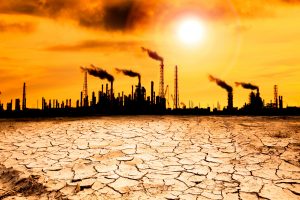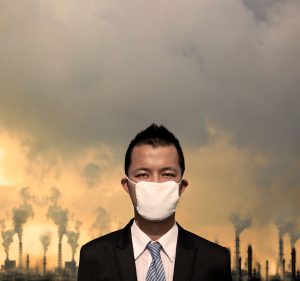Renewable Energy in the GCC: The Human Impact

Around the world, mankind faces grave challenges that are driving profound changes in the energy market and society’s reliance on fossil fuels.

Environmental concerns over traditional energy sources are being compounded by uncertainties over costs, dwindling fossil fuel reserves, and the rising demand coming from an increasingly urban, global population that continues to grow.
On top of this direct demand for more energy, water scarcity is also causing further pressures, with significant energy resources required to power desalination plants.
Against this backdrop, it is little wonder that renewable energy is drawing an increasingly large focus from society, commercial organizations and governments – the latter with some significant success. In 2015, 22.8% of global electricity production came from renewable sources, with only coal (39.3%) and gas (22.9%) accounting for a larger share. In contrast, nuclear (10.6%) and oil (4.1%) were responsible for relatively small amounts of electricity generation. The average annual growth rate of renewables has been remarkable, with solar PV leading the charge at 45.5% average growth per annum from 1990-2015.[1]
What is renewable energy?
In the Middle East, three main renewable energy sources are driving this change in the energy mix:
Solar energy, which has several technologies, including concentrated solar power (CSP) used to heat water to steam to power turbines. However, by far the most prevalent is photovoltaic energy, which is generated when solar cells (or photovoltaic cells) convert sunlight into electricity. It is more than 60 years since scientists first discovered that silicon creates an electric charge when exposed to sunlight. In some solar cells, silicon has been replaced with other materials such as solar inks, solar dyes, and conductive plastics.
Wind energy, which is generated when wind turbines are used to create mechanical power, which is then converted into electricity by a generator.
And geothermal energy, which involves using the heat found in natural hot water reservoirs to drive an electric generator.
Renewables on the rise
Figures from the International Energy Agency reveal the impact of renewables generation across the 35 member states of Organization for Economic Cooperation and Development (OECD). In 2016, 23.8% of all electricity generated in the OECD came from renewables – a figure up 3.8% year-on-year, driven by an increasing uptake in wind and solar photovoltaic energy generation. These two renewable energy sources grew at an annual rate of 21% and 43% respectively between 2000 and 2016.[2]
Around the world, responsible governments recognise the massive energy challenge facing their societies and are themselves are setting ever more ambitious renewable energy targets.
In the European Union, the aim is to meet 20% of energy needs from renewable sources by 2020,[3] with some EU member states going even further. Germany, for example, is planning to generate 100% of its electricity supply from renewable energy by 2050.[4]
In Saudi Arabia, the government committed to developing a “competitive renewable energy sector” in its Vision 2030 plan. Since the inspiring ambitions of Vision 2030 were first outlined, the initial target of generating 9.5GW of renewable energy by 2030 has been brought forward by seven years, to 2023.
Saudi Arabia: renewal through renewables
Although this target is ambitious, the government has already taken major steps in developing the country’s renewable energy market, shortlisting bidders for 700MW of solar and wind power projects in the first round of its renewable energy initiative in April 2017.
His Excellency Khalid Al Falih, Saudi Energy Minister, said: “The market response to the Kingdom’s invitation to its first renewable energy projects has been overwhelmingly positive, demonstrating market confidence in our vast renewable energy potential and investment environment.”[5]
This confidence and determination reflect the enormous potential for renewables in Saudi Arabia.
Thanks to its position in ‘sun belt’, which stretches from the west coast of North Africa to the eastern side of Central Asia, fewer countries have higher levels of solar radiation than Saudi Arabia. Its climate and vast stretches of flat land are ideal for solar panel installations, with much of the infrastructure needed to connect solar power to the grid already in place.
In the country’s northeast and central regions, as well as those near mountains in the west, there is enough wind to enable a large-scale economically viable wind energy industry to flourish. To be commercially sustainable, wind turbines need to harness average wind speeds of six meters per second. In Saudi Arabia’s three most suitable locations, average wind speeds are consistently measured at eight meters per second – 33 per cent higher than the point at which wind energy becomes economically viable.
The hot springs of Saudi Arabia, meanwhile, are ideally suited for geothermal power generation. Al Khouba hot spring is considered the most important of at least 10 hot springs spread across the country that could be harnessed to produce geothermal energy.
The real-world impact of renewable energy
As the growth of renewables continue to accelerate, there will be significant impacts on communities within Saudi Arabia, the GCC and across the world. These impacts are likely to be seen in three main areas: cheaper energy bills for consumers, new jobs to service the growing renewables industry, and lower levels of air pollution and harmful emissions.
In the five years leading up to 2013, the World Health Organization (WHO) recorded an 8% rise in global air pollution levels[6].
According to the World Bank and the Institute for Health Metrics and Evaluation (IHME), 87% of the world’s population now live in countries in which ambient pollution levels exceed air quality guidelines set by WHO. That figure rises to 90% in low- and middle-income countries[7]. Of cities with more than 100,000 inhabitants in low- and middle-income countries, 98% fail to meet WHO air quality guidelines[8].
As air pollution increases, so too does the risk of a range of health concerns – including stroke, heart disease, lung cancer, and chronic respiratory diseases. In 2013, 5.5 million lives were lost to air pollution, making it now the fourth leading risk factor for premature deaths worldwide. [9]
However, the introduction of renewables into the energy mix should significantly reduce the use of fossil fuels, which cause the vast majority of air pollution. The International Renewable Energy Agency estimates that the GCC region is likely to see fossil fuel reductions in the power and water sectors of 25% by 2030. In total, 2.5 billion barrels of oil equivalent could be saved through the region’s renewable energy plans between 2015 and 2030[10].
Aside from health benefits, the growth of renewables is also set to provide economic benefit, too. Renewable energy offers large-scale job creation opportunities, as well as the chance to rebalance GCC economies and create cleaner environments in which to live[11].
According to the UK Energy Research Centre, solar PV projects create at least twice the number of jobs per unit of electricity generation compared with coal or natural gas.[12] By 2030, renewable energy could be potentially responsible for 207,000 GCC jobs – of which almost 77,000 may be in Saudi Arabia[13].
Finally, as the technology behind renewable energy generation becomes more efficient, the cost to the consumer will reduce. Producing energy from renewables is, in general, now more efficient than producing traditional energy. Once the initial cost of installation has been passed, the production of energy becomes much cheaper – meaning lower utility bills for consumers.[14]
A cleaner, cheaper future for all
Throughout its history, Abdul Latif Jameel has been determined to advance the communities it serves. Now, with its investment in renewable energies, it continues in that fine tradition, recognizing an opportunity to help the Saudi Arabian government fulfil its transformational ambitions over the coming years.
Omar Al-Madhi, CEO of Abdul Latif Jameel Energy Saudi Arabia, said: “Renewable energy is a chance to create new jobs, new skills and new opportunities for the local population. By localizing technology and transferring knowledge, we can provide a strong foundation on which the Saudi renewables industry can thrive.”
To find out more about Abdul Latif Jameel Energy’s investment in renewable energy solutions, and how it is working to shape a better future for all in Saudi Arabia, visit www.alj.com/energy.
[1] Renewables Information: Overview (2017 edition), International Energy Agency, accessed August 2017
[2] Coal falls as gas rises: World energy balances in 2016, International Energy Agency, 8 August 2017
[3] Renewable Resources: The Impact of Green Energy on the Economy, Bussines.com, 22 February 2017
[4] 100% Renewable Electricity Supply by 2050, United Nations, accessed August 2017
[5] Saudi Arabia Announces Qualified Companies for Round 1 of National Renewable Energy Program, Renewable Energy Project Development Office, 10 April 2017
[6] Air pollution levels rising in many of the world’s poorest cities, World Health Organization, 12 May 2016
[7] The Cost of Air Pollution: Strengthening the Economic Case for Action, World Bank and Institute for Health Metrics and Evaluation (IHME), September 2016
[8] WHO Global Urban Ambient Air Pollution Database (update 2016), World Health Organization, accessed June 2017.
[9] Air Pollution Deaths Cost Global Economy US$225 Billion, World Bank, 8 September 2016.
[10] Renewable Energy Market Analysis: The GCC Region, International Renewable Energy Agency, 2016.
[11] Renewable Energy Market Analysis: The GCC Region, International Renewable Energy Agency, 2016.
[12] Low carbon jobs: The evidence for net job creation from policy support for energy efficiency and renewable energy, UK Energy Research Centre, 2014
[13] Renewable Energy Market Analysis: The GCC Region, International Renewable Energy Agency, 2016.
[14] Renewable Resources: The Impact of Green Energy on the Economy, Business.com, 22 February 2017


 Added to press kit
Added to press kit


